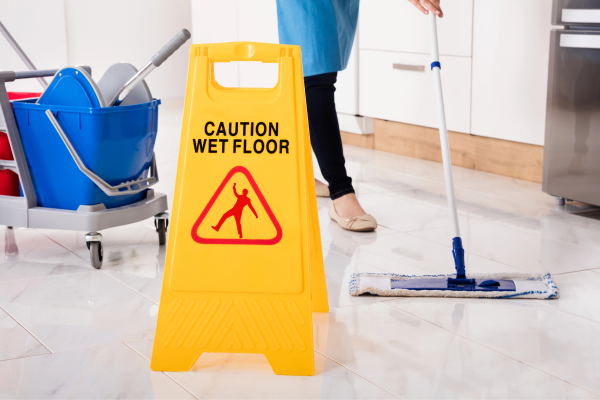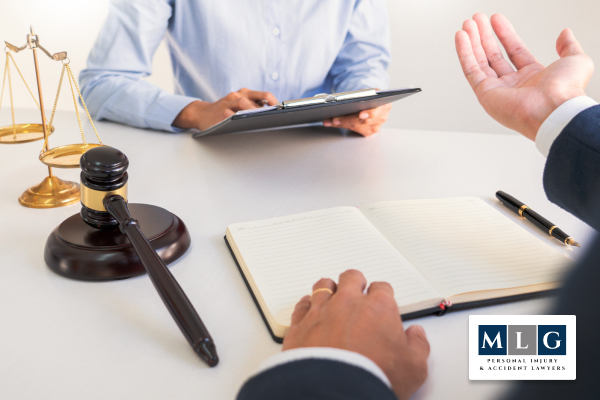
Slip-and-fall incidents can happen anywhere, often resulting in serious injuries. When you slip and fall on another person's property, proving that the property owner was at fault is vital for winning your case. This involves showing that they were negligent in maintaining safe conditions.
Marcereau Law Group understands the complexities of these cases and is here to help you navigate them.
Proving liability in a slip-and-fall incident entails clearly understanding the circumstances and evidence surrounding the accident. This can include anything from wet floors without warning signs to unexpected obstacles.
Slip-and-fall incidents are the most common causes of injury in public and private spaces. They can lead to a range of injuries that vary in severity. These incidents can occur for all types of reasons, often related to property owner's negligence in maintaining their premises.
The consequences of this incident can be long-lasting. Victims may face not only physical pain but also financial issues that mount quickly. Moreover, the recovery process can be lengthy and complicated, seriously impacting the victim's quality of life.
Liability in slip-and-fall cases refers to the property owner's mandate to ensure their premises are safe for visitors. This includes addressing potential hazards that could cause someone to slip, trip, or fall.
Proving liability involves demonstrating that the owner knew or should have known about the dangerous issue and did not take appropriate actions to mitigate it. This could involve failing to clean up a spill, not fixing broken flooring, or not providing adequate lighting.
Establishing this link between the hazard and the owner's negligence is key to a successful slip-and-fall claim.

Many factors can contribute to slips and falls, which are among the most frequent types of accidents in premises liability claims.
One of the most common causes of slip and fall incidents is wet or slippery surfaces. These can include spills, freshly mopped floors, or icy walkways that must be adequately treated. Property owners must mop up spills quickly.
More than uneven flooring, such as loose floor tiles, potholes in parking lots, or unexpected steps, can also lead to falls.
Owners should ensure that all floors are even and properly maintained to avoid such accidents. Please do so to avoid a liability claim against them.
Poor lighting can make it hard to spot trip hazards, such as steps, uneven surfaces, or obstacles. The property owner is responsible for providing adequate lighting to ensure people can move safely around their property. Inadequate lighting is an important factor in many slip-and-fall cases.
Obstacles like clutter, debris, or random objects left in walkways can be tripping hazards. Property owners must keep their premises clear of such hazards, especially where people are expected to walk. Ignoring this duty can lead to accidents and subsequent liability claims.
To win a slip-and-fall case, you must prove four key legal elements.
Every property owner must keep their property safe for visitors. This duty involves regular inspections, maintenance, and prompt removal of any hazards.
If a property owner neglects this duty, they can be held liable for any incidents that take place as a result.
A breach of duty occurs when an owner knows about a hazardous condition and does nothing to fix it. This could be ignoring a spill, not repairing damaged flooring, or any other negligence that leads to an unsafe environment. Proving this breach is important for establishing liability.
Causation links the property owner's negligence to the accident. You must show that the dangerous condition directly caused your slip and fall. This connection is essential for proving that the owner's actions or lack thereof were the proximate cause of your injuries.
Damages refer to the actual losses you incurred because of the accident. This can include medical bills, lost pay, emotional trauma, and more. Documenting these damages thoroughly is vital for receiving fair compensation.

Medical records are vital in slip-and-fall cases because they provide concrete evidence of your injuries and the treatments you received.
These records tie your injuries to the incident, making it harder for the other side to argue that your injuries were pre-existing or caused by something else. Having detailed and accurate medical records strengthens your case substantially.
It is essential to keep detailed notes of the incident, including how it happened, what you felt immediately after, and your injuries.
Write down everything as soon as possible when the details are still fresh. These notes can help your lawyer understand exactly what happened and build a stronger case for you.
If any of your property, such as glasses, clothing, or a cell phone, was damaged during the slip and fall, get repair estimates and keep all bills. This documentation can be included in your claim, potentially increasing your compensation.
Property damage can add substantial value to your case if properly documented.
Gathering the right evidence is important for proving liability in slip-and-fall cases.
Creating incident reports and obtaining accident reports from the property owner or manager provides official documentation of the accident.
These reports should detail the circumstances of the fall and any immediate actions taken by the property owner. Having these reports can substantially support your claim.
Medical records document your catastrophic injuries and outline your recovery process and any future medical needs.
Expert testimony, especially from medical professionals, can explain the details of your injuries and their possible causes. This testimony is powerful in establishing the accident's impact on your life.
Eyewitnesses who saw your fall can provide independent accounts of the accident, which can help corroborate your version of events. Their testimonies can be especially useful if the property owner disputes your claim about the condition of the premises at the time of the accident.
Surveillance footage can capture the moment of the fall, showing the conditions that led to it. Photos of the site taken right after the incident are equally important. These visual proofs are compelling evidence and can be critical in proving your case.

Understanding the legal framework surrounding slip-and-fall accidents is key to effectively proving liability.
Comparative negligence in California affects slip and fall cases seriously. This rule means that if you are found partially to blame for the incident, your compensation can be cut by your percentage of fault.
For example, if you are found 20% at fault and your damages total $100,000, you would receive $80,000. Understanding comparative negligence is essential for managing your expectations and building your case.
Proving fault in slip and fall cases can be difficult due to several factors.
Marcereau Law Group have extensive experience handling slip-and-fall cases. We know the details of premises liability law and how to prove negligence effectively.
We will start by conducting a comprehensive investigation of the accident, gathering compelling evidence, and crafting a persuasive argument for your compensation.
We negotiate aggressively with insurance companies and defendants to ensure you receive the maximum settlement possible. Our team supports you throughout the legal process, from the first consultation to the final settlement or court judgment.
We are committed to getting you the compensation you require to cover your medical bills, lost wages, and pain and suffering. Let us handle your premises liability claim.

You must act quickly if you or someone you know has been injured in a slip-and-fall accident. Marcereau Law Group has the experience with slip and fall lawsuits.
If a fall occurs, you need expert help. Our personal injury law firm will advocate for your rights. Contact our personal injury attorney today for a free consultation to discuss your slip and fall lawsuit.
Schedule Your Free Consultation
"*" indicates required fields


"*" indicates required fields